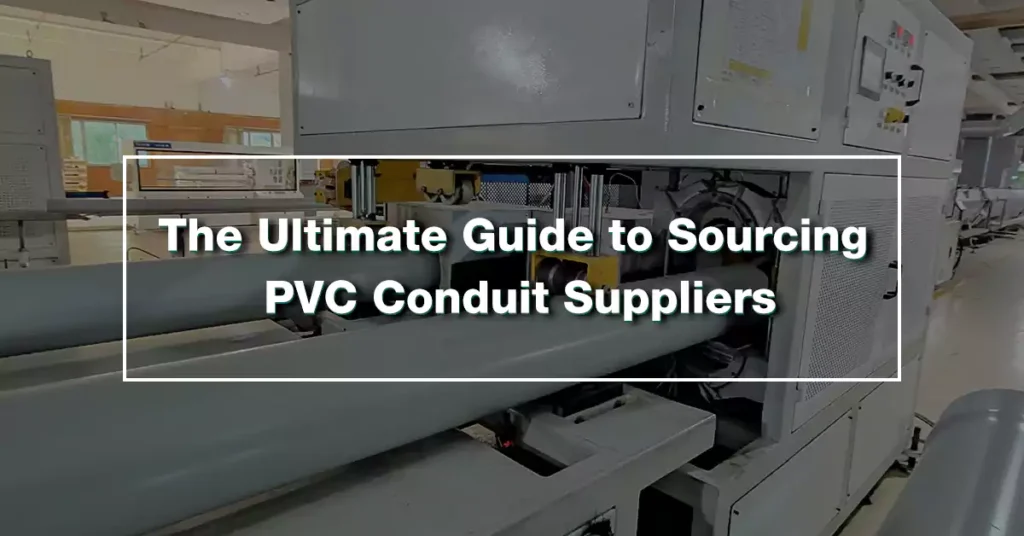
Tabla de contenido
Sourcing PVC conduit suppliers is a critical aspect of supply chain management that holds significant implications for an electrical company’s success. As companies strive to optimize efficiency and reduce costs, the process of supplier sourcing becomes increasingly important. From ensuring product quality to negotiating competitive pricing, finding reliable PVC electrical conduit suppliers requires a strategic approach that considers various factors.
In this comprehensive guide, we will explore the essential steps and considerations involved in sourcing PVC conduit pipe suppliers. Whether you are a seasoned professional or new to the industry, this guide will equip you with the knowledge and insights necessary to make informed decisions in your supplier selection process.
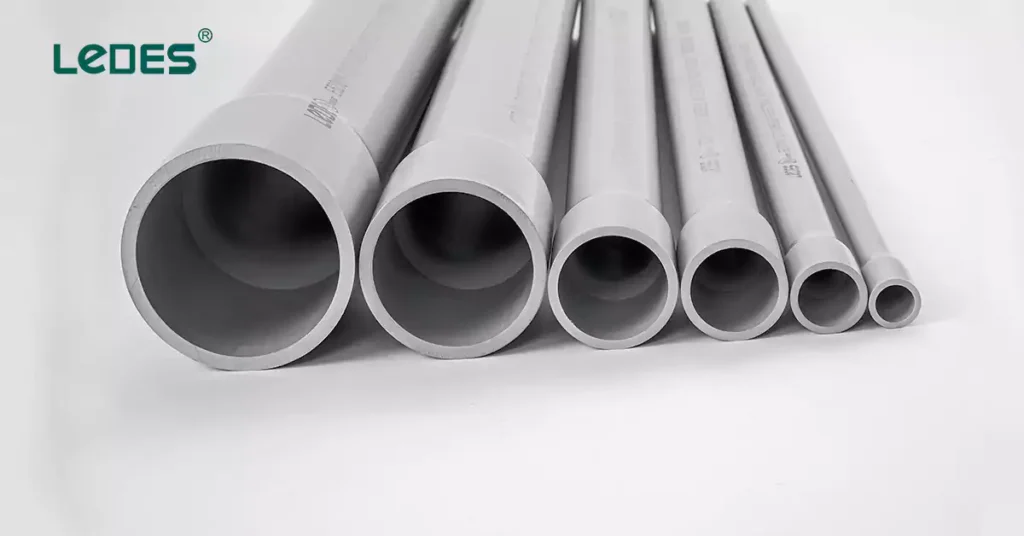
PVC (cloruro de polivinilo) was first synthesized in 1872 by the German chemist Eugen Baumann, following extensive research and experimentation. However, it was not until several decades later, in 1932, that the first tubes made from a PVC copolymer were successfully produced. This marked a significant milestone in the development of PVC as a versatile material.
Over the course of many years, PVC pipes have evolved into an indispensable component in the construction industry. They are widely used in various fields such as electrical, hydraulic, and oil and gas transportation. The exceptional properties of PVC, including its durability, versatility, and cost-effectiveness, have positioned it as a preferred material for a wide range of applications.
In the construction industry, whether you are a general contractor, subcontractor, or builder, sourcing reliable suppliers is an essential part of the process. In this article, we will explore the topic of finding trustworthy PVC conduit manufacturers. We will discuss key considerations and strategies to help you navigate the search for reliable PVC conduit suppliers in the construction sector.
A PVC conduit supplier is a company that possesses the capability to independently manufacture and produce PVC conduits and related products. These suppliers operate with modern equipment and have dedicated facilities for the manufacturing process. As PVC conduit manufacturers, they are required to have industry-recognized production qualifications and modern management processes, such as ISO or BSCI certifications, as well as industry-approved product certifications like UL and CSA.
By meeting these qualifications, PVC conduit pipe suppliers can ensure the timely delivery of orders to potential customers while maintaining product quality. Additionally, it is crucial for these suppliers to prioritize the rights and welfare of their employees. As a modern enterprise, companies like Ledes understand the importance of implementing contemporary management practices that align with labor rights and ensure stable product quality.
Therefore, as a PVC conduit pipe supplier, it is necessary to fulfill the following criteria:
- Possess production facilities and modern equipment capable of independent PVC conduit and accessory manufacturing.
- Implement modern management processes to enhance efficiency and quality control.
- Establish a humane management system that upholds labor rights, supported by a dedicated management team. This forms the foundation for the sustainable development of the company.
Meeting these requirements enables PVC conduit suppliers to deliver high-quality products while maintaining ethical and sustainable business practices. In the next section of this guide, we will explore the specific factors to consider when evaluating PVC conduit suppliers, including production capabilities, certifications, and employee welfare practices.
When it comes to sourcing electrical PVC conduits, various strategies can be employed to ensure an efficient and reliable supply chain. Here are some key strategies commonly used in electrical conduit sourcing:
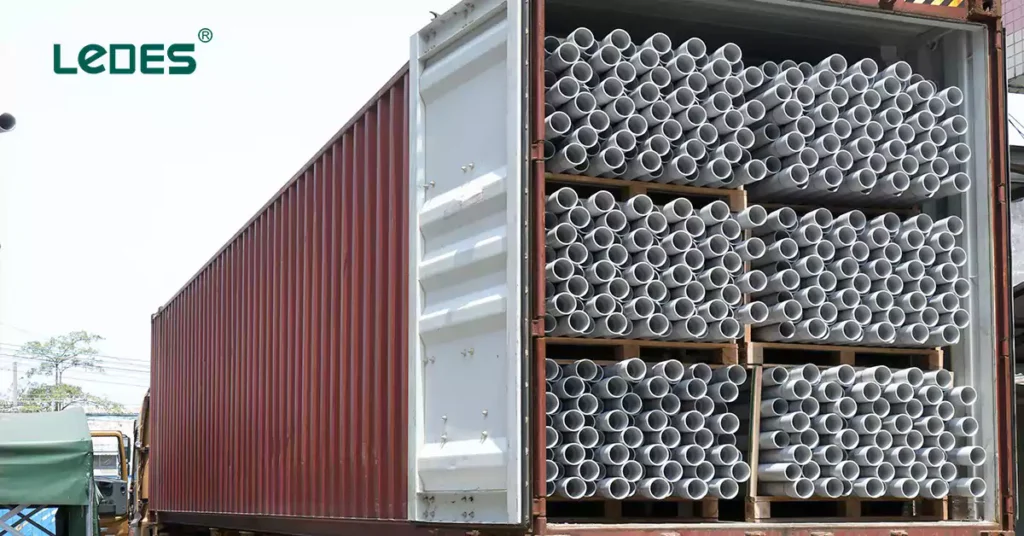
Regional sourcing focuses on procuring electrical conduits from suppliers within a specific geographic region. This strategy aims to capitalize on local manufacturing capabilities, reduce transportation costs, and minimize lead times. Regional sourcing can provide benefits such as cultural and linguistic compatibility, better market understanding, and improved responsiveness to local regulations and standards. By sourcing from nearby regions, companies can also contribute to the local economy and support sustainability initiatives. However, it is essential to ensure that the regional suppliers meet quality standards and have the capacity to fulfill the required specifications.
Global sourcing involves procuring electrical conduits from suppliers located worldwide. This strategy allows companies to access a broader range of suppliers, take advantage of cost disparities, and tap into specialized expertise. Global sourcing provides opportunities to diversify the supply chain, access innovative products, and explore emerging markets. It can also offer benefits such as economies of scale, favorable exchange rates, and access to advanced manufacturing technologies. However, global sourcing requires careful supplier evaluation, effective communication, and robust logistics management to mitigate risks associated with distance, cultural differences, and international trade regulations.
Insourcing, also known as in-house production or vertical integration, involves bringing the production of electrical conduits in-house instead of relying on external suppliers. This strategy allows companies to have direct control over the entire manufacturing process, ensuring quality consistency and timely production. Insourcing electrical conduit production provides companies with the flexibility to adapt to changing market demands, maintain intellectual property, and retain core competencies within the organization. It can also enhance supply chain security and reduce dependency on external suppliers. However, insourcing requires significant investments in infrastructure, equipment, and skilled labor. Companies need to carefully evaluate the costs and benefits of insourcing to ensure it aligns with their strategic objectives and long-term sustainability.
Outsourcing in electrical piping sourcing involves contracting external parties, such as manufacturers or specialized service providers, to produce or supply electrical conduits. Companies often choose to outsource when they want to leverage the expertise, resources, and economies of scale offered by external suppliers. Outsourcing electrical conduit production can lead to cost savings, increased operational efficiency, and access to specialized manufacturing capabilities. It allows companies to focus on their core competencies while relying on trusted suppliers for the production and delivery of electrical conduits. However, effective outsourcing requires careful selection of suppliers, clear communication channels, and robust quality control measures to ensure that the outsourced products meet the required specifications and standards.
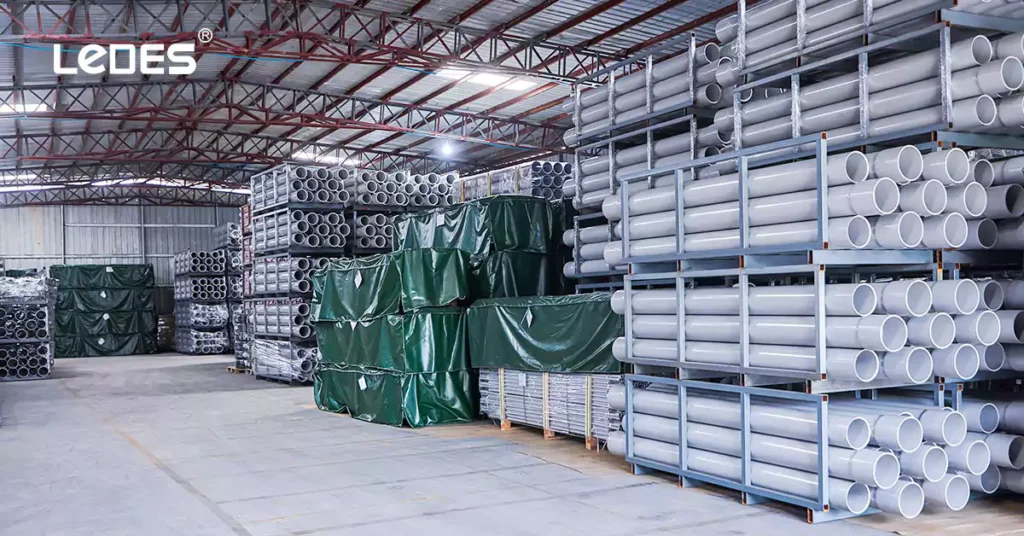
In addition to the information provided above, there are several indicators that can help you evaluate PVC conduit suppliers. Generally, you can consider two dimensions: the supplier’s own capabilities and market feedback.
In addition to the information mentioned earlier, you can assess the supplier’s registered capital, factory size, and number of employees based on publicly available data to make an initial judgment. Additionally, you can consider the supplier’s years of operation as described below.
It is important to check if the number of years a company has been in operation aligns with its overall strength description. For example, if a company claims to have been in business for several decades but the information provided significantly differs from its actual capabilities, it raises suspicion. In such cases, it is advisable for buyers to conduct further research through other channels and validate their observations.
Prominent suppliers in the industry are likely to have strong research and development (R&D) capabilities. They continuously introduce new products or release certified products, such as those certified by UL or ETL for conduit and fittings. You can conduct research or observe your potential suppliers to assess their R&D capabilities. If your supplier demonstrates these capabilities, it indicates their commitment to innovation. For example, Ledes can showcase its certificates and projects.
While having a wide product range can be an indicator of a strong company, with a good overall strength and robust R&D capabilities, it is also common to seek suppliers that specialize in a specific field. These specialized suppliers often provide high-quality and competitively priced products. Even if your company is a Fortune 500 enterprise, it is still a good idea to include a few specialized suppliers in your supplier list.
If your supplier focuses on a specific field and possesses strong R&D capabilities, they should be capable of customization according to your requirements. In the PVC conduit industry, apart from traditional customization of dimensions and colors, the ability to meet project-specific requirements is crucial. Different projects in the construction industry have unique demands, including variations in material, performance, and even length requirements. For instance, if your project involves a high-end hotel, the contractor will likely have strict safety requirements for conduits, including flame resistance, resistance to direct sunlight, and resistance to corrosive chemicals. Choosing a capable supplier ensures that your project’s needs are met, reducing communication costs, advancing project timelines, and providing a stable supply.
As a buyer, it is understandable that you want to purchase the best products at the lowest price. However, product quality and price are often at odds with each other (“you get what you pay for”). Therefore, buyers need to evaluate how to strike a balance between product quality and price, satisfying their needs while reducing procurement costs.
Buyers can investigate whether the supplier has publicly sold products in your country or has a history of supplying to customers in your industry. Generally, suppliers with publicly available sales records in the market have established good relationships with customers, especially long-term, stable supply to your country or industry. Such suppliers are more reliable and have a certain brand reputation. This is advantageous for buyers because these suppliers value their brand image and reputation, and they pay attention to product quality and customer feedback when supplying to you.
As a buyer, you can gather information about supplier evaluations from your industry, whether positive or negative. As real customers who have completed transactions, they have a certain degree of authority in assessing the supplier because they have experienced their products and services. Seeking feedback from peers is a time-saving approach that can reduce trial and error costs.
As a buyer, there are typically two methods to find suppliers: offline and online. Let’s explore both approaches:
Offline supplier search refers to the process of finding suppliers through offline events such as trade shows, business directories, or other means.
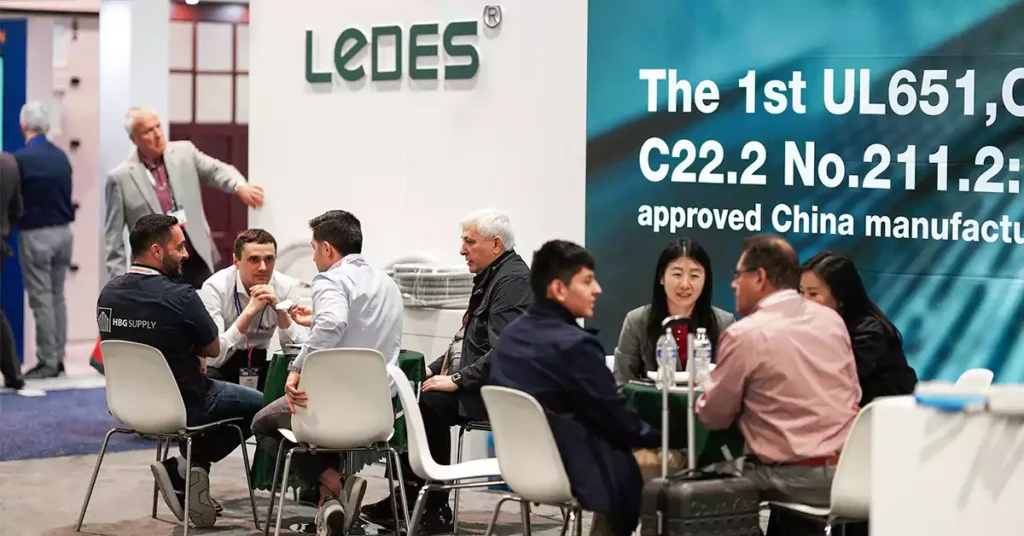
By participating in offline trade shows or industry events, buyers can connect with local or well-known suppliers within the industry. This method provides a convenient way to meet suppliers. However, there are some drawbacks. Attending trade shows incurs costs (often substantial), and the efficiency may not be as high compared to online methods.
In the past, many companies used to buy local business directories or yellow pages published by organizations to find suppliers. This method can be effective as these directories often categorize companies based on different industries, increasing the precision of the search. However, there are limitations. The content of these directories relies on the research and inclusion policies of the publishers, which may lead to incomplete listings or the omission of newer companies, restricting buyer choices.
It is worth noting that recommendations from friends, preferably within the same industry, can be valuable. This method is quick and often based on their firsthand experience and knowledge of the recommended suppliers’ products and services. However, it also has limitations as it depends on the friend’s network, which may not cover all suppliers in the industry, especially emerging and exceptional ones.
Online supplier search involves using search engines like Google or Bing and utilizing keywords to find suppliers. This method offers several advantages: it is cost-effective, does not require physical presence at events or subscription fees for magazines, and has become more efficient with the rapid development of internet and AI technologies.
However, there are challenges associated with online search. Search engines operate based on ranking mechanisms, and with the abundance of search results, it can be overwhelming to find additional suppliers manually. The effort required to carefully examine and search through each result can be significant, potentially resulting in missed opportunities with potential high-quality suppliers.
Our suggestion is to utilize both methods! Take full advantage of the convenience provided by internet technology. Begin by conducting an online search for suppliers and creating a list of potential suppliers or vendors. Then, verify the suppliers one by one through email or offline communication.
We understand that this approach requires a significant investment of time. However, once you have established a supplier list, subsequent procurement and maintenance will become much more streamlined, saving you time and effort in the long run.
Remember, combining offline and online sourcing methods can maximize your chances of finding the right electrical conduit suppliers and ensure a robust supply chain for your business.

Creating a comprehensive supplier list offers several advantages for businesses in their procurement processes. Here are some of the benefits:
Having a supplier list allows you to streamline your procurement process by eliminating the need to search for suppliers every time you have a new requirement. Instead, you can refer to your existing list and directly contact the suppliers who meet your needs, saving time and effort.
When you create a supplier list, you can evaluate and select suppliers based on predefined criteria. This helps you establish a standardized evaluation process, ensuring that you assess suppliers consistently. It also allows you to compare different suppliers’ offerings and choose the ones that best align with your requirements.
Maintaining a supplier list enables you to effectively manage your relationships with suppliers. You can keep track of their performance, including factors such as product quality, pricing, delivery reliability, and customer service. This information helps you make informed decisions when it comes to supplier selection and contract renewals.
By having a list of trusted suppliers, you can negotiate better pricing and terms based on your previous interactions and volume of business. This can lead to cost savings and improved profitability for your organization.
Building a diverse supplier list helps mitigate risks associated with relying too heavily on a single supplier. Having multiple options allows you to switch suppliers if needed, ensuring continuity of supply even in unexpected situations such as disruptions, price fluctuations, or changes in the market.
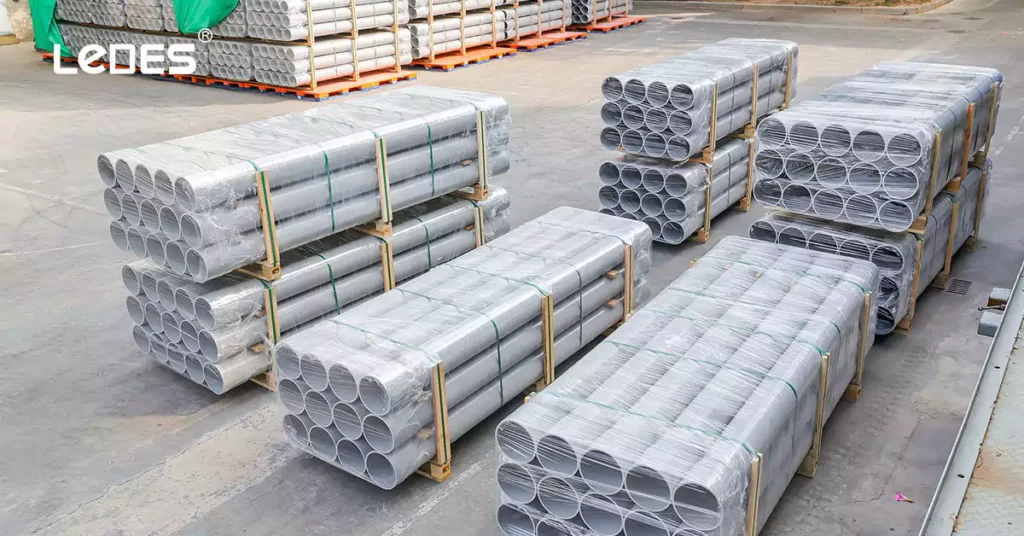
Sourcing the right PVC electrical pipe suppliers requires a systematic approach to ensure quality, reliability, and cost-effectiveness. Here are eight steps to guide you through the supplier sourcing process:
Clearly outline your PVC electrical pipe requirements, including specifications, sizes, quantities, quality standards, and any specific certifications or regulations that must be met. This will serve as a foundation for evaluating potential suppliers.
Create a comprehensive supplier list that includes the contact information, product offerings, certifications, and other relevant details of each potential supplier. This list will serve as a centralized reference for the sourcing process.
Conduct a thorough analysis of the PVC electrical pipe supplier market. Identify key players, assess their market reputation, industry experience, product range, and customer reviews. This analysis will provide insights into the supplier landscape and inform your decision-making process.
Based on your market analysis, choose the most suitable sourcing strategy for PVC electrical pipes. Consider options such as direct sourcing, utilizing agents or brokers, leveraging online platforms, or attending industry trade shows. Select the strategy that aligns with your requirements and offers the best potential for finding reliable suppliers.
Engage in negotiations with the selected suppliers to secure favorable pricing, terms, and conditions. Negotiate aspects such as payment terms, delivery schedules, product customization, and volume discounts. Ensure that the finalized contracts clearly outline the scope of the agreement, quality control requirements, and other critical aspects.
Once agreements have been finalized, seamlessly integrate the selected vendors into your implementation process. Share relevant information, including project timelines, production requirements, and quality control measures. Establish clear communication channels and set expectations to ensure a smooth integration of vendors into your operations.
Implement a robust system to monitor and evaluate the performance of your PVC electrical pipe suppliers. Establish key performance indicators (KPIs) such as product quality, delivery timeliness, responsiveness, and customer service. Regularly benchmark supplier performance against these KPIs to identify areas for improvement and address any issues promptly.
Continually seek opportunities to improve and optimize your PVC electrical pipe sourcing process. Regularly review your supplier list, explore new supplier options, and stay updated on industry trends and advancements. Embrace feedback from both internal stakeholders and suppliers to drive continuous improvement and enhance your overall procurement process.
By following these eight steps, you can establish a systematic and effective PVC electrical pipe supplier sourcing process.

When it comes to sourcing PVC conduit suppliers, following best practices is essential for a successful procurement process. Here are five key practices, with revised expressions, that will help you make informed decisions and establish strong supplier relationships:
Maintain open and transparent communication channels throughout the sourcing process. Regularly engage with suppliers to discuss requirements, provide feedback, and address any concerns. Clear and effective communication will ensure that everyone is on the same page and help build a collaborative working relationship.
While price is important, it should not be the sole determinant when selecting PVC conduit suppliers. Consider factors such as product quality, reliability, on-time delivery, and customer service. Evaluate suppliers based on their industry reputation, experience, certifications, and ability to meet your specific requirements. A comprehensive evaluation will help you choose the suppliers that offer the best value for your needs.
Ongoing evaluation of PVC conduit suppliers is crucial to maintain high standards and performance. Establish key performance indicators (KPIs) tailored to your requirements and regularly assess suppliers against these metrics. Monitor aspects such as product quality, delivery timeliness, responsiveness, and adherence to contractual agreements. This evaluation will enable you to identify areas for improvement and make informed decisions about supplier relationships.
Ensure that your vendor requests are clear, comprehensive, and tailored to your specific needs. Provide detailed specifications, quantities, delivery schedules, and other relevant information. This will help suppliers understand your requirements accurately and enable them to provide competitive and relevant proposals.
Establishing strong relationships with PVC conduit suppliers is vital for long-term success. Implement effective supplier relationship management practices, such as regular communication, collaboration on product development, sharing market insights, and addressing challenges together. Building strong relationships will enhance supplier performance, foster mutual trust, and create opportunities for continuous improvement.
By following these best practices, you can optimize your PVC conduit supplier sourcing process and cultivate reliable and collaborative relationships.
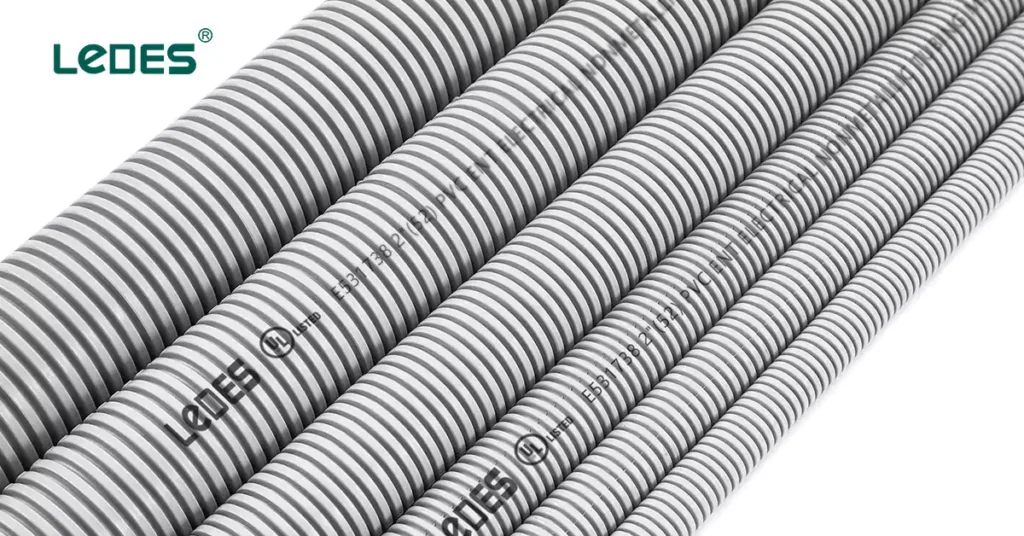
In conclusion, sourcing PVC electrical pipe suppliers is a critical task that requires a systematic approach and practices, knowning these we’ve talked about can help you find reliable conduit pipe suppliers effectively. If you have any questions of looking for a good PVC conduit manufacturer, Contáctanos en cualquier momento.



